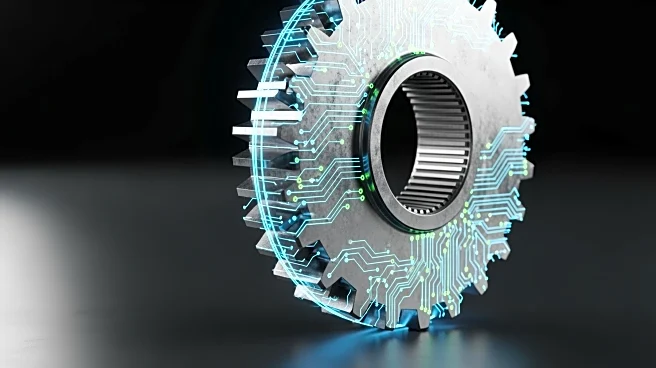What's Happening?
Super Micro Computer, Inc. (Supermicro), a leading provider of IT solutions, showcased its latest innovations in high-performance computing (HPC) and artificial intelligence (AI) infrastructure at the
Supercomputing 2025 conference in St. Louis, Missouri. The company introduced a range of products designed to enhance computing density, efficiency, and performance. Key highlights include the NVIDIA GB300 NVL72 rack-scale solution, which integrates NVIDIA Blackwell Ultra GPUs and Grace CPUs, and advanced liquid-cooled systems like the 4U HGX B300 Server. Supermicro's offerings aim to support large-scale HPC and AI environments, with applications across various industries such as financial services, manufacturing, and scientific research. The company's commitment to energy efficiency and scalability is evident in its new cooling technologies, including Rear Door Heat Exchangers and Sidecar Cooling Distribution Units.
Why It's Important?
The advancements presented by Supermicro at Supercomputing 2025 are significant for the future of HPC and AI infrastructure. By enhancing computing density and efficiency, these innovations can lead to faster and more sustainable deployment of AI and HPC workloads. This is crucial for industries that rely on high-performance computing for complex simulations and data analysis, such as climate modeling and oil and gas exploration. The introduction of liquid cooling technologies also addresses the growing need for energy-efficient solutions in data centers, potentially reducing operational costs and environmental impact. As demand for AI and HPC capabilities continues to rise, Supermicro's offerings could play a pivotal role in meeting these needs, benefiting both enterprise and scientific communities.
What's Next?
Supermicro's participation in Supercomputing 2025 highlights its ongoing collaboration with technology partners to deliver next-generation infrastructure solutions. The company's focus on integrating compute, storage, networking, and thermal management suggests a continued effort to simplify the deployment of complex AI and HPC systems. As industries increasingly adopt AI and HPC technologies, Supermicro's innovations may drive further advancements in these fields. Stakeholders, including businesses and research institutions, are likely to explore these solutions to enhance their computational capabilities. The company's commitment to green computing and reducing total cost of ownership may also influence future developments in sustainable technology practices.
Beyond the Headlines
Supermicro's emphasis on energy-efficient cooling solutions reflects a broader industry trend towards sustainability in technology infrastructure. The integration of liquid cooling systems not only improves performance but also aligns with environmental goals by minimizing energy consumption. This shift towards greener computing practices could have long-term implications for data center operations, potentially setting new standards for efficiency and environmental responsibility. Additionally, the company's focus on scalable and flexible solutions may encourage other IT providers to innovate in similar directions, fostering a competitive landscape that prioritizes both performance and sustainability.













